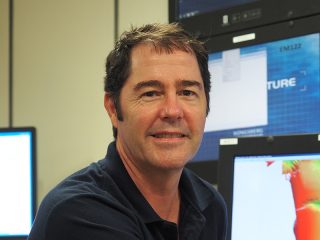The news came suddenly but was not unexpected. Our month-long science voyage on Australia’s largest research vessel, Investigator, was cancelled due to ever-tightening restrictions as the COVID19 crisis escalated around the world. Together with my close colleague Jody Webster at the University of Sydney, we had been planning this expedition to the northern Great Barrier Reef for over two years. And just like athletes working towards the Olympics, all of our efforts to raise grant funds, recruit students, and test advanced technologies for the expedition were timed to peak in May when the Investigator was to sail. Now working from home in Cairns, with universities emptied, all we could do was commiserate with each other, and hope – in time – we could reschedule.
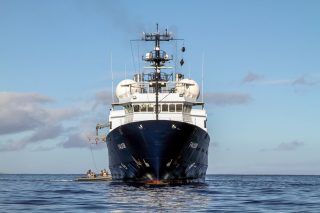
Simultaneously, the Schmidt Ocean Institute’s research vessel Falkor was having mounting difficulties on the other side of Australia. The Falkor had sailed to Australia in early 2020 aiming to conduct a series of deepwater expeditions throughout the year, working slowly clockwise around the coast. I was helping to organize the research permits to allow the Falkor to multibeam map during the transits between each expedition. With only ~30% of Australia’s deeper marine estate mapped in detail using multibeam echosounders, so the new depth data collected by the Falkor were vital to help improve our understanding of the seafloor topography that the ship was passing over.
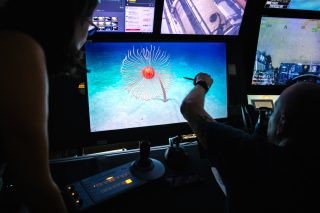
Following the Falkor’s last fully science-crewed expedition to the Ningaloo Canyons, state health authorities had started closing ports and banishing vessels from Western Australia waters, leading to a cancellation of all the expeditions planned in Northern Australia. The only option was for the Falkor to head east towards Cairns – always planned as a destination – but now much sooner. The hope was that the vessel could get exemption for border crossing restrictions, but everything hinged on whether the crew aboard were considered essential to Australia/Queensland. By this stage, the Falkor’s crew had been at sea for over two months with little break between expeditions.
I continued to liaise with Eric King, SOI Director of Operations, while trying to bring forward permit applications to match the rapid progress of the Falkor towards Cairns. In those video meetings with Eric, it was clear what was at stake: Here was one of the world’s most advanced research vessels, with underwater video technology beyond anything available in Australia, at the risk of being banned from our shores. It could be another great loss to Australian science. In mid-April, the Falkor and crew finally arrived into Cairns, to sit quietly at anchor offshore and await the health authorities’ determination. Thankfully, after a week of being on a knife-edge, the Falkor was cleared.
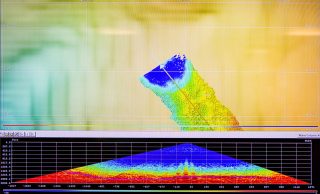
With the immediate crisis behind us, Eric posed whether the Falkor could conduct some opportunistic multibeam mapping and ROV SuBastian dives in the GBR and Coral Sea. In my mind I went, “Hmm, let me think about that for one second!” Absolutely, we could. As background, colleagues and I have been doing mapping expeditions along the GBR continental slope and offshore Coral Sea for over ten years, leading to many science papers on submarine canyons, drowned reefs and landslides – all seafloor features revealed by advanced multibeam mapping technology. Here was an opportunity for the Falkor to map the gaps, revealing more of this iconic reef system.
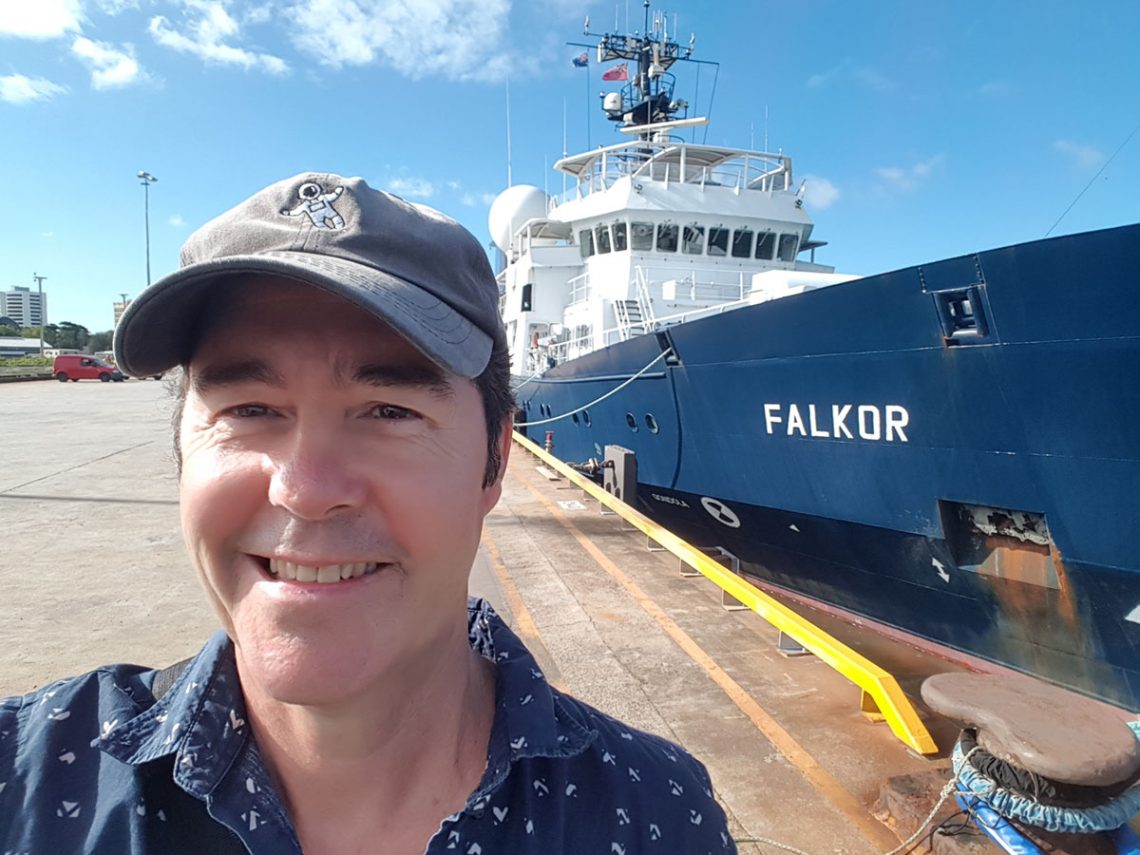
So began two weeks of intense voyage proposal writing, reviews, ship track planning, permit application revisions, fine-tuning of science objectives, reaching out to collaborators, developing outreach and media plans – most of which is usually done over a period of at least a year. Our deadline was to get the detailed Cruise Support Plan approved in time for the Falkor to sail on 29 April for a month in the Coral Sea. However, no science crew would be onboard due to COVID19 restrictions. So how could this be done, with myself as a (virtual) Chief Scientist?
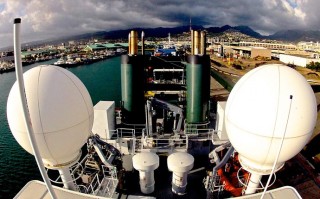
Now this was an entirely new concept for me. Not being onboard means I do not have the immediate situational awareness one normally has when making decisions, like where to go next or what target sites to choose. For a virtual expedition to be successful, it is fundamentally all about communications. Technically, it requires excellent VSAT to satellite internet connections on the ship, not to mention the capacity of our own home’s NBN connection, also used by my children doing their home schooling and my wife trying to run her business from the kitchen table.
It also requires good personal communication between ourselves – from the ship’s crew to the science team and other collaborators onshore, and amongst the various science crew scattered around the Australian continent between Cairns, Townsville, Sydney, and Canberra. The ROV SuBastian test dive today was the most amazing demonstration of the technical communications. We had Google Hangouts running to allow chat between the crew in the Operations Room to me in my lounge room. A livestream link allowed my screen to be filled with the ROV video as it was lowered to 800 metres in the Coral Sea. I was able to speak through a headset to the ROV team.
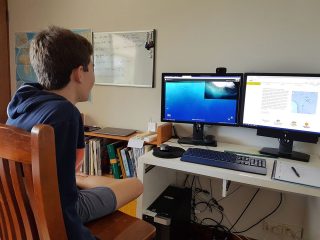
I called my family over to the monitor as they recovered the ROV on the aft deck. You can imagine their excitement watching this event from the perspective of a camera looking up into the Falkor’s hull with propellers thrashing and bubbles flying about, then bursting through the surface to see people on the back deck reaching out to secure the ROV. It is certainly not your everyday COVID19 stay-at-home event. Later, we had the TeamViewer app running which gave me exact view of the multibeam acquisition screen, just as if I was in the Ops Room watching the seafloor being mapped.
Now after the first (virtual) day at sea, I think the bigger challenge will be the communications amongst the science team onshore, not because of any interpersonal issues, but simply because none of us are in any normal working situation. We are all dealing with state-by-state lockdown restrictions, and working from home with all those difficulties. So we will do our best to make this expedition a success. But if anything, this voyage brings some positive news amongst the background of woe, and proves that you can conduct science expeditions in a time of COVID19.
